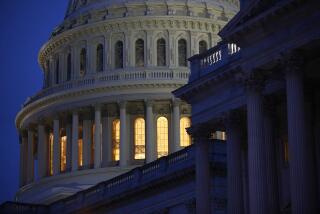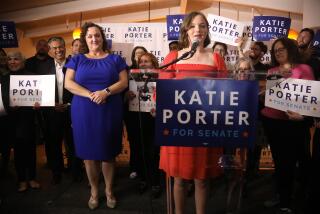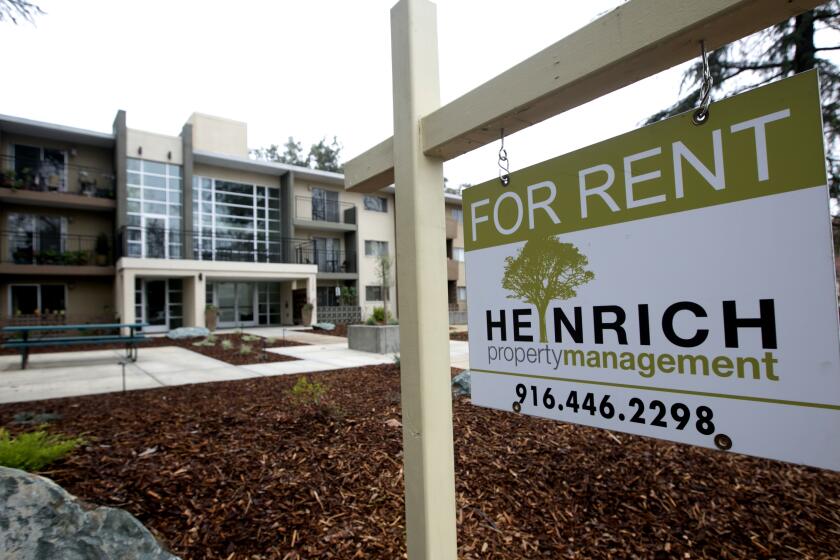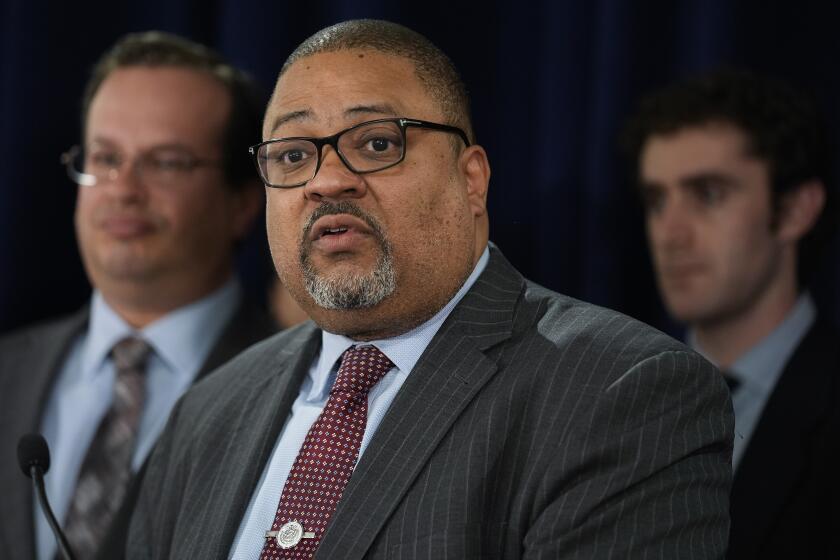Everything you need to know about the suddenly wide-open race for an Orange County congressional district
Now that Rep. Ed Royce (R-Fullerton) is the first California member of Congress to opt for retirement instead of a long, contentious campaign for reelection, his 39th Congressional District is getting a new look from Democrats eager to regain control of the House of Representatives.
The Cook Political Report immediately moved the Orange County district’s rating from “leans Republican” to “leans Democratic,” and Inside Elections shifted it from the GOP column to “Tossup.”
The 13-term Republican’s announcement came as a surprise, with party leaders learning of Royce’s retirement as the public did, through social media. Royce was one of the top targets in California, and Democrats liked their chances before it suddenly became an open seat.
Still, the reality on the ground still makes a Democratic win in this historically Republican district complicated. Here’s what you need to know about this major battleground in the 2018 midterm.
Hillary Clinton won here in 2016. Could that be a fluke?
Clinton beat Donald Trump 51% to 43% in Royce’s district in an election that marked the first time a Democrat won Orange County in 80 years. It’s still unclear if that’s a bellwether for future Democratic victories here or a measure of Trump’s stunning unpopularity in California, where just 28% of adults approve of his job performance.
According to an analysis by the election guide California Target Book, Clinton is the only Democratic candidate to win in Royce’s district in any statewide contest going back six years.
Not your grandmother’s Orange County
Major demographic changes have been afoot in Orange County, once a bastion of conservatism, for years.
When Royce was first elected to Congress in 1992, the district he won was more than 60% white and less than a quarter Latino. Today, Asian Americans and Latinos make up more than 65% of his district while whites are just 28% of constituents.
Voter registration numbers have followed suit. Republicans’ advantage in registered voters has shrunk to 1.7 percentage points from 8 percentage points since 2012. The district is 34.4% registered Democrats and 36.1% Republicans. Decline-to-state voters make up 24.9% of those registered.
Turnout efforts in this district will be key, as minority voters have not historically registered to vote or turned out at the same rate as white voters, a phenomenon that’s often amplified during midterms.
The Republican bench in Orange County is still strong
Royce’s announcement could leave Republicans scrambling to get behind one candidate before the March 14 filing deadline. There is no shortage of conservative candidates here.
Names that have been floated to replace Royce are Orange County Supervisor Michelle Steel, Young Kim, a former assemblywoman who previously worked for Royce, and Ling Ling Chang, who lost a bid for state Senate by a razor-thin margin in 2016 but won large portions of Royce’s district. All three could be strong Asian American candidates in a district where 29% of constituents and one-fifth of voters are Asian.
Former Orange County Republican chair Scott Baugh already has amassed a campaign war chest of more than $500,000 — to run in a neighboring district in case Republican Rep. Dana Rohrabacher announces his retirement. Baugh wouldn’t say Monday whether he’d consider shifting races and instead seek Royce’s seat. (It is not necessary for members of Congress to live in their districts.)
A strong Republican candidate might complicate Democratic efforts.
It would have been easier for Royce’s opponents to tie him to tricky positions he’s taken on Trump’s agenda, particularly the Deferred Action for Childhood Arrivals program and healthcare. A newcomer on the GOP side won’t necessarily have an established record to attack, and it could be harder for Democrats to tie a new GOP candidate to the unpopular president.
California could flip the House, and these 13 races will make the difference »
There’s potential for Democratic infighting in the primary
Royce’s district is home to one of the most crowded congressional primaries in California. At least a half dozen Democrats have said they’re running, all of them first-time candidates. Five have raised well over $100,000, including healthcare executive Andy Thorburn, who has given himself more than $2 million.
Even with a surge in energy from liberals, Democrats could find themselves stuck in an internecine battle to get past the June 5 election.
With California’s top-two primary, the two candidates with the highest number of votes head to the November general election, regardless of party. If GOP leaders can build momentum behind a single Republican candidate, they could stand a chance of retaining Royce’s seat, and protecting the party’s House majority.
No Republican had filed to challenge Royce before he announced his retirement.
Royce still has plenty of money in the bank that he could use to help a Republican
The powerful House Foreign Affairs Committee chair had amassed a stunning war chest, with more than $3.5 million in the bank as of Sep. 30, the most recent campaign finance reporting period. That’s more than any of the other lawmakers facing difficult races in November, and more than double the $1.4 million similarly threatened Orange County Rep. Mimi Walters had in the bank as of Sept. 30.
Royce could dole that money out to GOP House candidates across California or transfer it to the national party to help with competitive elections. He also could contribute unlimited funds to a political action committee that opposes Democrats or supports a Republican in his district, as long as the committee doesn’t coordinate with any candidate.
Gas tax politics could scramble the contest
Gov. Jerry Brown announced Monday that the election to recall State Sen. Josh Newman will happen June 5, the same day as California’s congressional primaries. The recall effort was launched by Republicans upset by Newman’s support of an unpopular new gas tax.
That’s important because more than 80% of the voters Royce represents live in Newman’s district, so there will be more attention and more campaigning around the election. Several of the candidates looking to replace Newman could seek to run for Congress instead.
There also are two separate campaigns underway to place a gas tax repeal initiative on the November ballot, a move congressional Republicans have supported as a way to boost GOP turnout.
For more on California politics, follow @cmaiduc.
Times staff writer Sarah D. Wire contributed to this report.
ALSO
Updates on California politics
UPDATES:
1:15 p.m., Jan. 15: This article was updated to note a March 14 filing deadline. It was extended from March 9 because the incumbent is not running.
8:30 a.m., Jan. 9: This article was updated to clarify the GOP advantage in registered voters.
This article was originally published Jan. 9 at 12:05 a.m.
More to Read
Get the L.A. Times Politics newsletter
Deeply reported insights into legislation, politics and policy from Sacramento, Washington and beyond. In your inbox three times per week.
You may occasionally receive promotional content from the Los Angeles Times.







